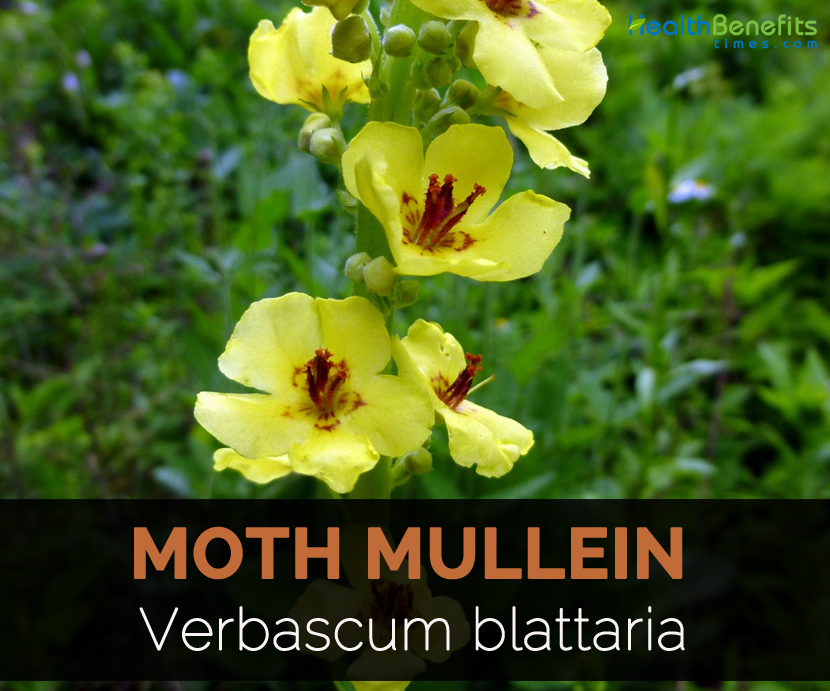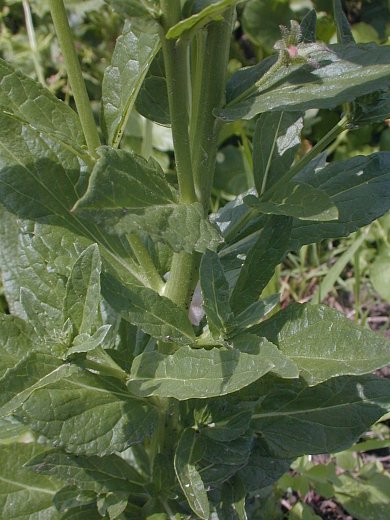Moth Mullein: The Tall Woolly Plant That's
Moth Mullein: The Tall Woolly Plant That's More Than Just a Weed
Moth mullein (Verbascum blattaria) is a tall, woolly plant that is often considered a weed. However, it is actually a valuable medicinal herb with a long history of use. Moth mullein is native to Europe and Asia, but it has been introduced to North America and other parts of the world.
The Plant
Moth mullein is a biennial plant, which means that it takes two years to complete its life cycle. In the first year, the plant produces a basal rosette of leaves. In the second year, the plant produces a tall, erect stem that can reach heights of up to 6 feet. The stem is covered in soft, woolly hairs, which give the plant its common name.
The leaves of moth mullein are also large and woolly. They are oblong or lance-shaped, and they can grow up to 12 inches long. The flowers of moth mullein are yellow and star-shaped. They are borne in a spike at the top of the stem.
The Uses
Moth mullein has been used for centuries for its medicinal properties. It is a traditional remedy for respiratory problems such as coughs, colds, and bronchitis. Moth mullein is also used to treat inflammation, allergies, and skin problems.
The active ingredients in moth mullein are saponins, which have expectorant, anti-inflammatory, and anti-bacterial properties. Saponins help to loosen mucus in the respiratory tract, making it easier to cough up. They also have anti-inflammatory effects, which can help to reduce inflammation in the airways.
In addition to its medicinal properties, moth mullein is also a valuable source of nectar for bees and other pollinators. The flowers of moth mullein are a bright yellow color, which attracts bees and other insects. The nectar from the flowers of moth mullein is a valuable source of food for these pollinators.
Growing Moth Mullein
Moth mullein is easy to grow from seed. The seeds should be planted in the spring or fall. Moth mullein prefers full sun and well-drained soil. The plant is drought-tolerant, but it will benefit from regular watering.
Moth mullein is a relatively pest- and disease-free plant. However, it can be susceptible to powdery mildew if the leaves are wet for prolonged periods of time.
Conclusion
Moth mullein is a tall, woolly plant that is more than just a weed. It is a valuable medicinal herb with a long history of use. Moth mullein is also a valuable source of nectar for bees and other pollinators. If you are looking for a plant that is both beautiful and beneficial, moth mullein is a great choice.
Moth mullein is a beautiful and versatile plant that has been used for centuries for its medicinal and culinary properties. It is a biennial plant, which means that it takes two years to complete its lifecycle. In the first year, the plant forms a basal rosette of leaves. In the second year, the plant produces a tall, flower-bearing stalk. The flowers of moth mullein are white or yellow, and they are often visited by moths.
Moth mullein has a number of medicinal benefits. It has been used to treat a variety of conditions, including coughs, colds, and allergies. It is also a good source of vitamins A and C.
In addition to its medicinal properties, moth mullein is also edible. The leaves can be cooked and eaten, and the flowers can be used to make tea.
If you are interested in learning more about moth mullein, I recommend visiting the website Garden Wiki. This website provides a wealth of information about the plant, including its history, cultivation, and medicinal uses.
FAQ of moth mullein
- What is moth mullein?
Moth mullein (Verbascum blattaria) is a biennial plant that is native to Europe and Asia. It is a member of the figwort family (Scrophulariaceae) and is closely related to common mullein (Verbascum thapsus). Moth mullein is a tall, upright plant that can grow up to 3 feet tall. It has large, hairy leaves and yellow or white flowers. The flowers bloom in the summer and are a source of nectar for bees and other pollinators.
- What are the benefits of moth mullein?
Moth mullein has a number of medicinal properties. It has been used for centuries to treat a variety of ailments, including coughs, colds, bronchitis, and asthma. It is also a good source of vitamins A and C.
- How do you identify moth mullein?
Moth mullein can be identified by its large, hairy leaves and yellow or white flowers. The leaves are oblanceolate with deeply toothed edges and are attached to the stem by short petioles. The rosette can grow to a diameter of 16 inches (41 cm) during the first year of growth, with each individual leaf reaching a length up to 8 inches (20 cm). The mullein forms a fibrous root system with a deep taproot. In the second year of growth, the stem grows slender and erect, and can reach a height of 11⁄2 to 3 feet (1⁄2 to 1 m).
- How do you care for moth mullein?
Moth mullein is a relatively easy plant to care for. It prefers full sun and well-drained soil. It is drought-tolerant and does not require much fertilizer. Moth mullein can be propagated from seed or by division.
- Is moth mullein a weed?
Moth mullein can be considered a weed in some areas. It is a prolific grower and can quickly become invasive. However, it is also a valuable medicinal plant and can be a welcome addition to a garden.
Image of moth mullein
- Image 1: A close-up of a moth mullein flower, showing its yellow petals and fuzzy, silvery leaves.
- Image 2: A tall, flowering moth mullein plant, with its leaves and stems covered in silvery hairs.
- Image 3: A cluster of moth mullein flowers, with their petals opening in the sunlight.
- Image 4: A field of moth mullein plants, with their tall, fuzzy stalks swaying in the wind.

- Image 5: A moth mullein leaf, showing its smooth edges and dense silvery hairs.


Post a Comment for "Moth Mullein: The Tall Woolly Plant That's"